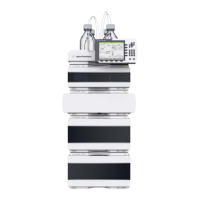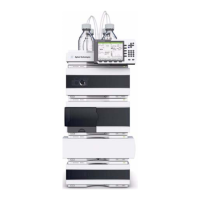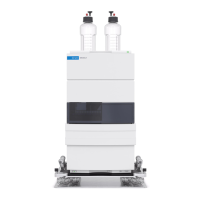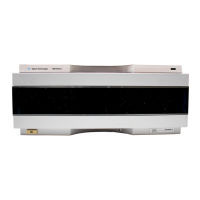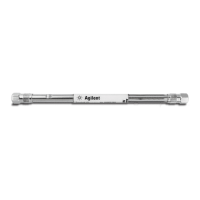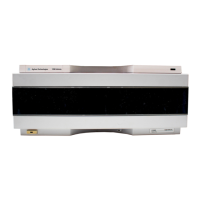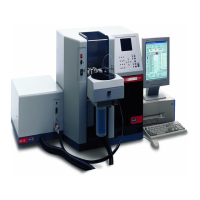104 1100 Series DAD and MWD User Manual
5 How to optimize the Detector
Ratio Qualifiers for Selective Detection of Compound Classes
Ratio qualifiers can be used where, in a complex sample, only one particular
class needs to be analyzed — a parent drug and its metabolites in a biological
sample, for example. Another example is the selective analysis of derivatives
after pre or postcolumn derivatization. Specifying a signal ratio that is typical
for the sample class is one way of selectively plotting only those peaks that are
of interest. The signal output remains at zero so long as the ratio is out of the
user-specified ratio range. When the ratio falls within the range, the signal
output corresponds to the normal absorbance, giving single, clear peaks on a
flat baseline. An example is shown in Figure 61 and Figure 62.
Figure 60 Peak Suppression Using Reference Wavelength
Hydrochlorothiazide
and caffeine
Wavelength 204 nm
No reference
Hydrochlorothiazide
and caffeine
Wavelength 222 nm
No reference
Hydrochlorothiazide
suppressed
Wavelength 204 nm
Reference 260 nm
Caffeine suppressed
Wavelength 222 nm
Reference 282 nm
Time (min)
Time (min)

